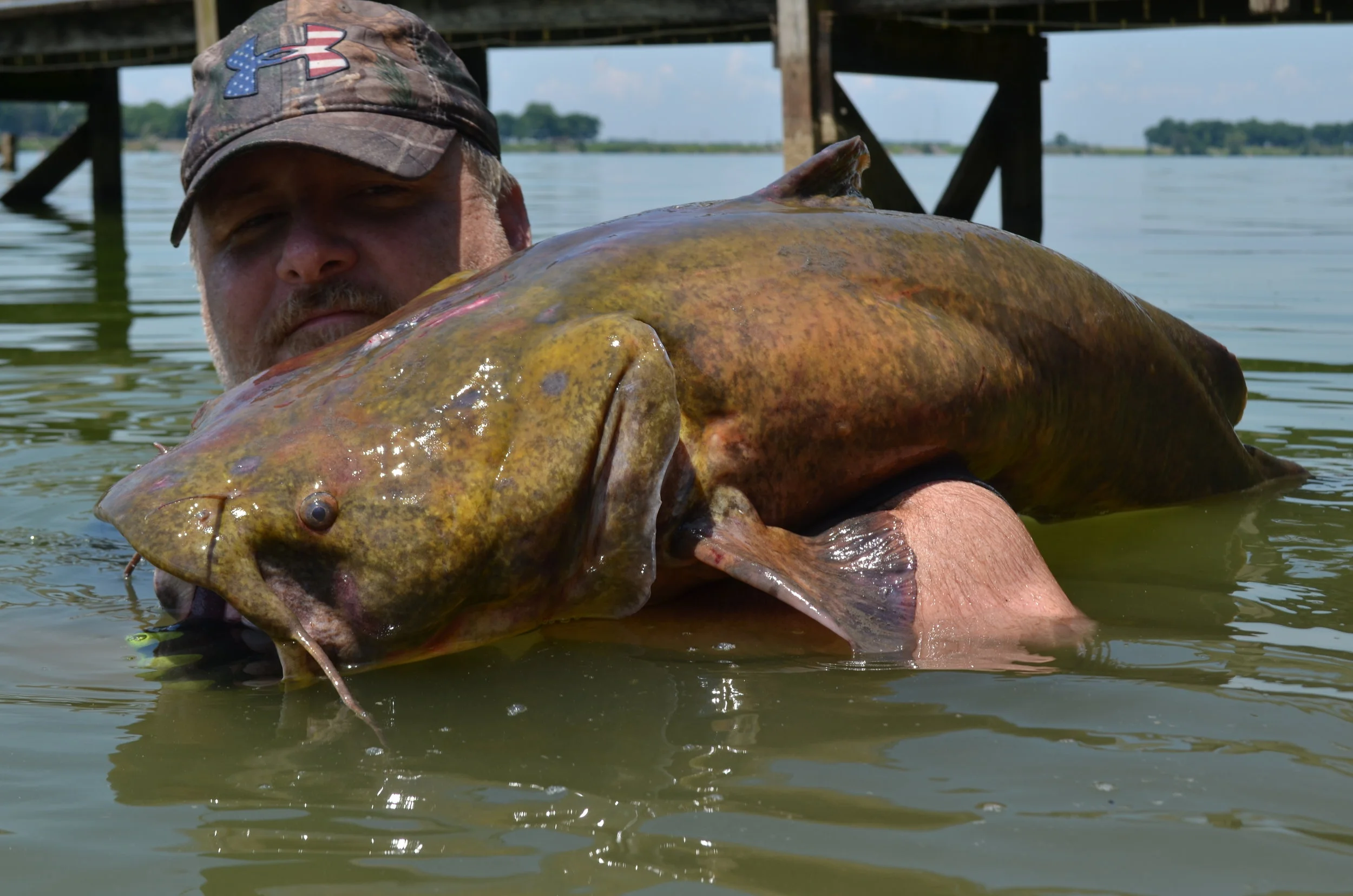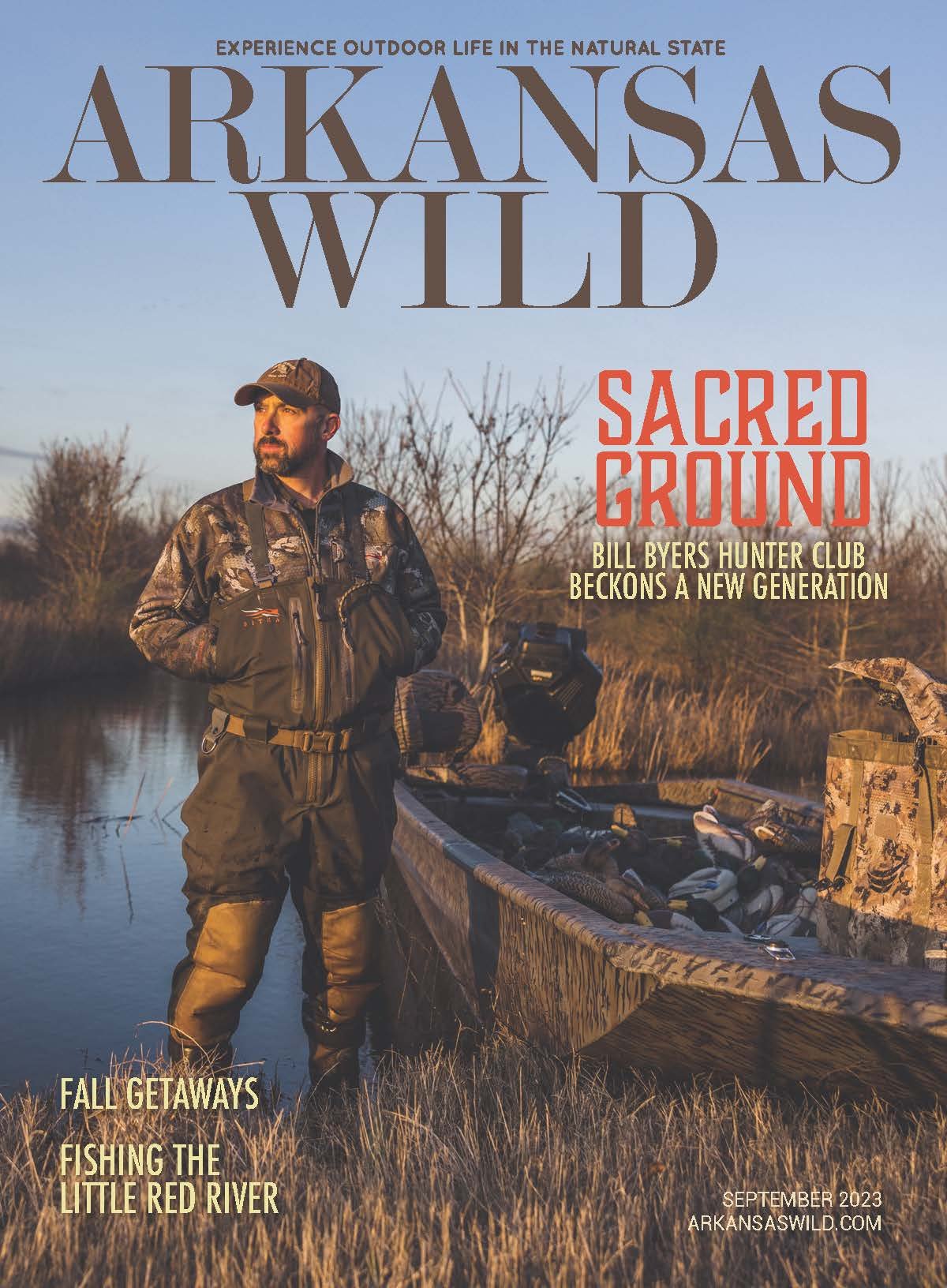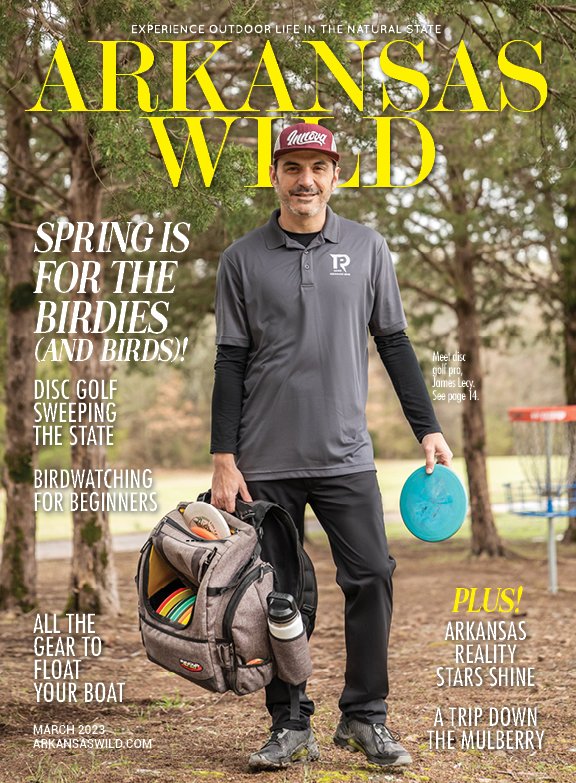Catfishing By Hand
An adventure in sticking your hand underwater and into the murky depths
By Richard Ledbetter
Noodling guide Chris Barnes holds a 30-pound catfish.
According to my guide on a recent catfish noodling expedition, Native Americans were catching big fish by hand well before European arrival on these shores. Whether you call it noodling, hogging or grabbing, 44-year-old Chris Barnes has been pursuing sizable catfish by hand for nine years now. His experience and expertise have garnered television appearances on the Outdoor Channel, Animal Planet and Catfish Kings. He has hosted would-be noodlers from Connecticut, Pennsylvania, Iowa, Texas, Florida, Louisiana and even Australia at $200.00 per head.
When Arkansas Wild approached me last winter about taking a trip with Chris come summertime, I said, “Sure, why not?’ At the same time, the thought of sticking my arm in a dark, submerged hole seemed counter-intuitive. But it was still a long way off before I’d have to face my trepidations.
In previous years, the AGFC has set noodling season from June 1 through October 31. In 2018, the opening day was moved to May 15. Around that time, I got a call from Barnes asking if I was ready to give hogging a try. I screwed up my best poker face and once more answered, “Sure, why not?”
Adam Weaver holds a fresh-caught 20-pound flathead hauled from its lair.
In a phone conversation just before our trip, Barnes mentioned he’d have to find a replacement fishing partner because a big fifty-plus pound flathead had broken his regular buddy, Larry Kussman’s, hand the previous week. I said, “You could have gone all week without telling me that.” Apparently, when Kussman wrestled the monster from his hidey-hole with both hands stuffed in its mouth, the big fish spun, snapping the bone in the middle of his left hand. When Barnes showed me Larry’s x-ray, I said, “I could’ve gone all week without seeing that.”
I caught up with Barnes and his 33-year-old friend Adam Weaver early the morning of June 8. Launching the boat, I noticed that either of the two stout fellows would make two of me. As we broke out of a side channel to embark onto a wide expanse of open water, Barnes pulled back on the throttle and let the boat drift. A pastor at Warren’s Grace Cowboy Church, he began our trip with a moving prayer for the Lord’s blessing and safe returns. That done, he pushed the throttle to the stops and we cut a wake across the glassy surface.
Arriving next to a heap of riprap and rubble piled against the shore beneath the waterline, Barnes warned me not to leap into the dark waters. It’s better, he suggested, to ease over the side slowly, slipping in. Ominously, he said, “I’ll tell you why later.”
For the first couple of holes, I watched from the dry comfort of the vessel, camera at the ready, while Chris and Adam worked together to explore the secret places where large catfish lay. Male fish first enter a crevice to sweep and pack the mud in preparation for the female to come in after him and lay her eggs. Once her roe are deposited, she leaves and the male returns to fan and protect the nest until their progeny hatch.
The guys carried varying lengths of cane pole with them to prod and explore the various openings with the idea of discovering what large quarry may hide within. Once they determined whether a big catfish was occupying the nest, it was time to reach in for the prize. They worked together to guard alternate entrances to the same cavern to prevent their prey escaping by a different route. Though Barnes has fished most of the more than 200 hiding spots on that body of water, catfish will wallow in different spots from day to day, drastically altering the dynamic of any given hole. Accordingly, it’s important to check the details of a spot before beginning the hunt.
Early in our long day each of the pair landed nice thirty-plus pound flatheads at two separate locations. Even though regulations allow fishermen to keep five fish per person, my hosts caught and released the fish following a photo op.
Then it was my turn to try. Chris explained how to go in with both hands spread wide and arms locked in up to the elbows to block the entrance, where he stationed me. He reminded, “Defense wins the game.” On his mark we took deep breaths and submerged. Both arms in the hole, I waited for a catfish to chomp down on one of my hands. It didn’t exactly work like that. After a short spell we both came up for a fresh breath. He asked, “Did you hear the thumping? That’s him biting at the prod stick. If you listen close you can hear the fish’s heart speed up just before he chomps down. It’s normally a steady pulse, but it’ll race just before he bites.”
Top to bottom: Chris and Adam check out a potential catfish hole. Adam and Chris dive for monster catfish in the shallows.
Catching our breath, we went under again. Eventually, a big flathead swam against my hand and held still long enough for me to force a thumb in his mouth. Overly excited, I popped up, fish in hand and held him out of the water looking in his eyes. That soon proved poor technique. With a quick twist he slipped free of my thumb grip, leaving the digit only slightly worse for wear.
On my next attempt, I was wiser. With Adam blocking one exit and Chris prodding the fish from another opening with a cane pole, the 20-pounder finally swam into my grasp. This time I pushed my right hand in a gill while forcing all four left-hand fingers in his mouth. Holding what I believed was a death grip, I hauled him out. Overly confident, I forgot the vital step of wrapping both legs around the critter beneath the surface until he stopped struggling. Instead, I snatched him to the surface, again looking my subject eyeball to eyeball for a brief instant, before he gave a twist and was back in the water. Remarkably, the fish swam a quick circle around all three of us before diving back in the same hole from whence he came. Recognizing my mistake and more determined than ever to redeem myself, I repeatedly reached back in his lair, trying to snag him again. But he was better educated as well. He flashed past my grip every time for the better part of the next hour. Before we knew it, we’d spent eight-hours climbing in and out of the boat, wading in water and mud beneath a glaring summer sun. In the end, he evaded my efforts and remained safe in his hole. But I figure that’s just a good excuse to make another trip soon.
On our way to the dock, Barnes explained why you don’t leap into the water from the boat. Slipping off his shoe, he showed the scar on his left foot. “Five years into noodling, I jumped out of the boat like I’d done a thousand times and a broken-off stick under the water went clean through my foot, shoe and all.” Due the unsanitary nature of catfish domain, he spent the next seven days in Baptist Hospital loaded up with antibiotics, combatting the potentially fatal infection. I appreciated him waiting to share that part of the story until we were done.
To book passage on a noodling expedition check out arkansasnoodling.com or Facebook @chrisbarnesarkansasnoodling.







